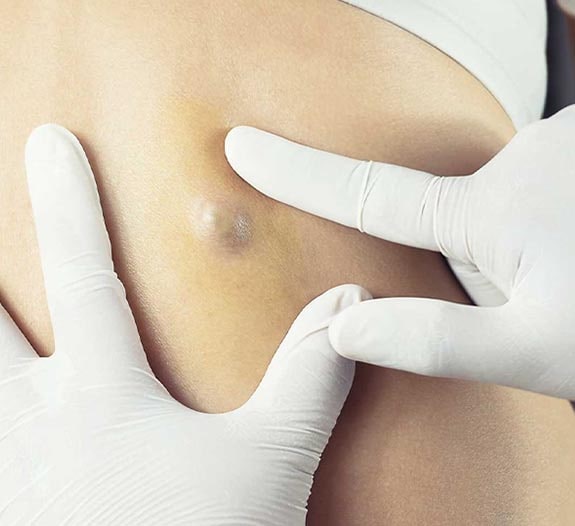
Diagnosis of a Sebaceous Cyst
It is diagnosed by simple physical examination. If the cyst appears unusual, malignancy is to be ruled out. Tests for the same include biopsy, CT scan, and ultrasound.
Procedure
A dermatologist may remove a sebaceous cyst if it is causing problems like infection, pain, and swelling of the cyst. Before starting the procedure local anesthesia is given to numb the area, followed by antiseptic preparation of the site.
The best treatment is to ensure complete removal because if a part of the sac wall of the sebaceous cyst remains, the cyst may regrow. Your dermatologist may use one of the following methods to remove sebaceous cyst:
- Wide cyst excision, where the cyst is completely removed but it can leave a scar.
- Minimal cyst excision, which causes minimal scarring but carries a risk of recurrence.
Post-procedure antibiotics to prevent infection are prescribed until the healing process completes.
 Whatsapp
Whatsapp Facebook
Facebook Twitter
Twitter Instagram
Instagram Linkedin
Linkedin Pinterest
Pinterest